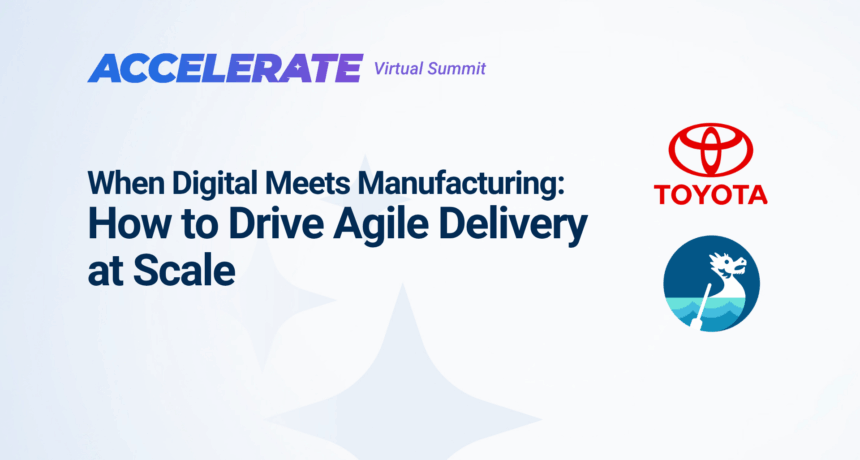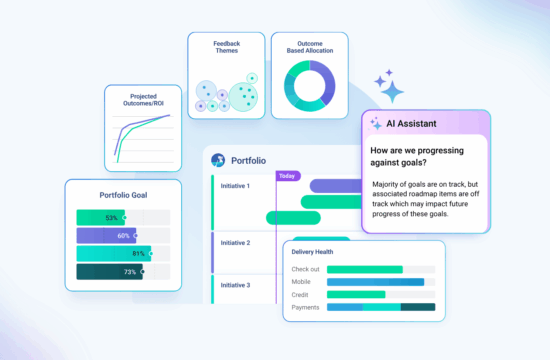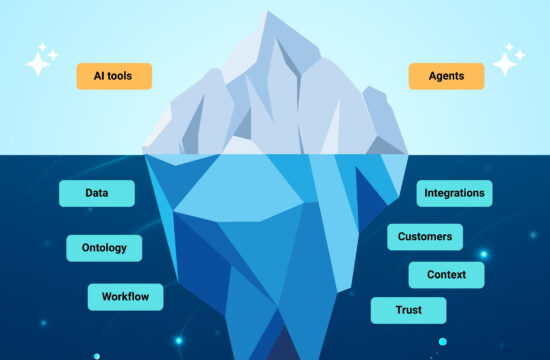Toyota Connected operates in a highly intricate product environment that spans dozens of teams, vendors, cross-product initiatives, and programs—all of which work at different cadences. This level of complexity meant disparate teams needed to align on product delivery while navigating cross-team dependencies and cross-organizational initiatives.
Historically, Toyota managed its efforts through manual reporting systems, spreadsheets, and across many disconnected Jira instances. These traditional methods not only created a labor-intensive burden but also failed to provide the comprehensive real-time visibility required to align and deliver products, programs, and portfolio initiatives effectively.
Manual reporting further complicated their efforts, especially when executives needed custom views of cross-product and cross-team initiatives.
At Accelerate 2025 Virtual Summit, Lucas Smith, Director of Agile and Program Services at Toyota Connected, shared insights on how to tackle these challenges and what it takes to deliver agility at enterprise scale.
“We’re focused on the product, but each product area has work that aligns to different areas, and that was a visibility challenge that Jira wasn’t helping us with.”
— Lucas Smith, Director of Agile and Program Services, Toyota Connected
5 Takeaways for Driving Agile Product Development at Scale
From Lucas’s experience leading complex product portfolios, here are five essential takeaways to guide organizations looking to achieve speed at scale in agile product development:
1. Standardize while preserving team autonomy
Toyota Connect discovered the importance of knowing where to standardize and where to allow flexibility:
“From a scale perspective, you need to have some expectations, particularly on the boundary points of how teams report or how the process works just because you need to be able to have visibility, you need to be able to see dependencies, but each team can operate with flexibility in terms of how they operate independently.”
— Lucas Smith, Director of Agile and Program Services, Toyota Connected
Portfolio-wide visibility and the right flexible tooling help organizations manage cross-product dependencies on a consistent foundation while allowing teams to operate in ways that work best for them.
2. Adapt to product lifecycle stages
Different stages of product development require different approaches:
“Acknowledging that products and things go through different life cycles… when you’re innovating initially on a product, you want to be able to move as fast as you can, try things, build POCs, validate whether this is really something the customer wants, but then once you actually scale that into production… you might need some more guardrails.”
— Lucas Smith, Director of Agile and Program Services, Toyota Connected
3. Focus on creating a single source of truth
Disconnected data sources create inefficiencies and blind spots. Consolidating data into one platform is essential for alignment.
“Dragonboat helped us create a single source of truth by marrying product data with initiatives, dependencies, and programs, all in one unified portfolio.”
— Lucas Smith, Director of Agile and Program Services, Toyota Connected
This foundation supports better decision-making across the organization.
4. Orient around customer experiences, not just delivery dates
One of the most significant shifts for Toyota Connected was recognizing that customer experiences evolve over time:
“The realization that the experience that customers have is no longer static when we sell a vehicle, but that we have to shift our mindset to be, to think about who’s using the different parts of the vehicle and how that is going to continue and evolve over time.”
— Lucas Smith, Director of Agile and Program Services, Toyota Connected
5. Create appropriate testing environments for faster iteration
Large organizations face significant risks when releasing at scale. Lucas recommends creating intermediate environments:
“Instead of saying, hey, we need to be able to push everything right to production, right to all the vehicles, create an independent or create a path in between.”
— Lucas Smith, Director of Agile and Program Services, Toyota Connected
View the full video recording here.
Visibility Is Critical to the Success of Product Development at Scale
You can’t make decisions, or adjustments, if you can’t see what’s going on. Real-time, multi-faceted visibility is critical in managing such a large, complex product portfolio. In particular, these areas:
- Tracking dependencies across products and portfolios
- Aligning work across teams and initiatives while keeping them autonomous.
- Working through multiple Jira instances seamlessly
- Going beyond static manual reporting -insights are more critical
“We took a look and said, let’s put the products on top in terms of our focus, but each product area might support multiple initiatives or programs. We needed a way to see all of it together.”
— Lucas Smith, Director of Agile and Program Services, Toyota Connected
“This is actually an area that Dragonboat has really helped us with,” Lucas shared. Their approach centered on putting products at the forefront while acknowledging that each product area has work supporting different initiatives:
“What Dragonboat has helped us do is create visibility between all these different dimensions—products, initiatives, and even programs. We can now have visibility and reporting that ties these elements together.”
— Lucas Smith, Director of Agile and Program Services, Toyota Connected
This multi-dimensional view allows Toyota Connected teams to quickly pivot between product-centered and initiative-centered views:
“With Dragonboat, I can quickly slice the data. I can view all the work tied to a specific product, see how it spans multiple initiatives, or flip the view and evaluate everything related to an initiative and its associated products.”
— Lucas Smith, Director of Agile and Program Services, Toyota Connected
Final Thoughts…
The intersection of digital and manufacturing presents unique challenges for organizations like Toyota Connected. By adopting a product-focused mindset, establishing appropriate operating processes, and implementing the right product portfolio tools, like Dragonboat, to provide real-time visibility and automated tracking, they’ve been able to balance innovation with necessary controls.
As Lucas Smith summarizes, understanding the lifecycle of your products and creating appropriate processes for each stage is key: “Being able to speak that and understand that with your teams and know that there is a lifecycle there… each of those stages is a little different, and the teams and your organization need to be able to treat each of those a little differently.”
Want to see how Dragonboat can help your organization accelerate product innovation and delivery at enterprise scale? Request a demo today.



